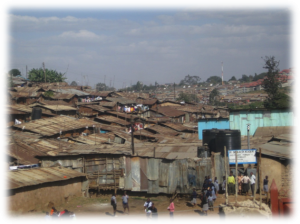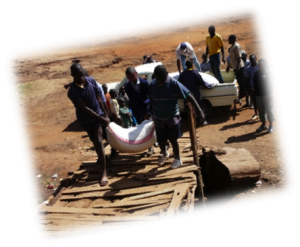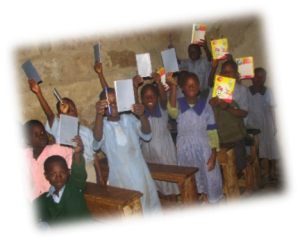St. Secilia Primary School

Kibera is the world’s second largest slum area, and is home to St. Secilia Primary School. Because Kibera is seen as an ‘illegal settlement’ by the government, there is no funding for the school, and they rely entirely on charitable support from organisations such as The Meserani Project.



Although pupils from Acklam Grange School first viewed the school in 2007, this was only from a distance, but what the pupils witnessed was quite distressing, and they made a vow that they would return.
In 2009 a second group of pupils from Acklam Grange School actually visited St. Secilia School, they met with the staff and pupils and took part in lessons.



The school was provided with sacks of maize and vegetables, as well as much-needed educational resources such as text books, exercise books, pens and pencils. Clothing was handed over to the pupils, and also to some of the pupils’ families.
A further visit in 2011 involved not only the supply of sacks of maize and vegetables, and a variety of educational resources, but one of the pupils who had visited in 2009 had raised $1,030 which was handed over to the Principal of the school, Angelina, to spend on teachers’ wages. The two main issues for the school were providing food for the children, and paying the teachers’ wages, so this was the focus of the visit.



Kibera Factfile
- The one-square mile of buildings houses up to one million people. The population grows by 5% every year.
- Half of the population of Kibera are under 15 years of age.
- 100,000 orphaned children live in Kibera, most have lost their parents through AIDS.
- One out of five children do not live to see their 5th birthdays.
- 66% of girls in Kibera routinely trade sex for food by the age of 16, and many begin at age 6.
- Life expectancy is 30 years.
- Crime and drug abuse is endemic, and violence is a daily threat.
- Kibera’s 1 million residents share 600 toilets; a single toilet serves 1,300 people. This leads to heavy pollution due to open sewage routes and common use of ‘flying toilets’.
- The buildings are built on compost and waste products, so structures frequently collapse in heavy rain.
- Homes are built from corrugated tin, mud and cardboard. Each single-room shack houses on average five people.
- 20% of Kenyans who are HIV positive live in the Kibera Slum.
- Violence is rampant in Kibera: women are routinely beaten, raped, or sold into prostitution; men and women are denied police protection, medical care, education, economic or political power.














